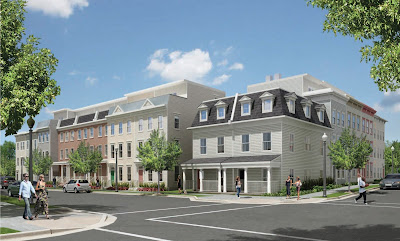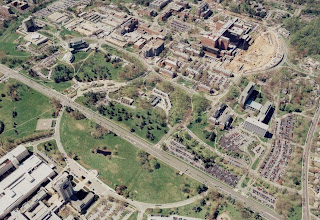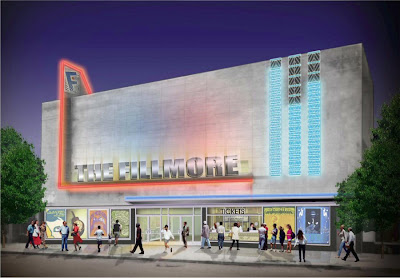 Part of the George Washington University 2007 campus plan was an effort to create a special historic district on the Foggy Bottom campus. While that has not yet happened, this week the Historic Preservation Review Board (HPRB) will consider a precursor, granting historic landmark designation to five campus apartment buildings and one office/studio. The HPRB Staff Report recommends that all six buildings be designated as landmarks in the District of Columbia Inventory of Historic Sites and further recommends submitting the structures to the National Register of Historic Places. Recognizing the buildings as historic bolsters the effort to create a contiguous district around the GW campus.
Part of the George Washington University 2007 campus plan was an effort to create a special historic district on the Foggy Bottom campus. While that has not yet happened, this week the Historic Preservation Review Board (HPRB) will consider a precursor, granting historic landmark designation to five campus apartment buildings and one office/studio. The HPRB Staff Report recommends that all six buildings be designated as landmarks in the District of Columbia Inventory of Historic Sites and further recommends submitting the structures to the National Register of Historic Places. Recognizing the buildings as historic bolsters the effort to create a contiguous district around the GW campus. The high-rise apartment buildings, according to HPRB documents, were largely built in the 1920's and 1930's when the area around GW saw a surge in demand for housing, thanks to the recently engorged federal government. The buildings are now used as residence halls; GW students/alums might remember The Everglades, The Flagler, The Keystone, Munson Hall and Milton Hall. Several of the buildings actually fall outside of the proposed historic district, but are considered historically significant enough to be landmarked along with structures inside the proposed boundaries.
The high-rise apartment buildings, according to HPRB documents, were largely built in the 1920's and 1930's when the area around GW saw a surge in demand for housing, thanks to the recently engorged federal government. The buildings are now used as residence halls; GW students/alums might remember The Everglades, The Flagler, The Keystone, Munson Hall and Milton Hall. Several of the buildings actually fall outside of the proposed historic district, but are considered historically significant enough to be landmarked along with structures inside the proposed boundaries.The John J. Early Office and Studio would also receive historic designation. The studio was once the workspace of, you guessed it, John Earley, an artist, architect and engineer. We have him to thank for the idea for all the pre-cast concrete we see on buildings today. According to the HPRB staff report, you may have seen Earley's personal work on the ceiling of the Reptile House at the National Zoo or at the Justice Department. Located at 2131 G Street, the building is set back from the street and sits across from the new School Without Walls.
According to Bruce Yarnall of HPRB, the proposed historic district has not yet come before the HPRB; this week's review will merely examine elements within the plan for an historic district within Foggy Bottom.


















 57,000 s.f. project will provide 22 parking spaces below grade and should complete by the Summer of 2011. The building will have a green roof and Artspace will be partnering with
57,000 s.f. project will provide 22 parking spaces below grade and should complete by the Summer of 2011. The building will have a green roof and Artspace will be partnering with 






















 The Fillmore will be a historic reuse project, maintaining the exterior of the old department store that has been vacant for almost 20 years. The new theater could have capacity ranging between 500 and 2,000, depending on the type of performances. The design for the project is by
The Fillmore will be a historic reuse project, maintaining the exterior of the old department store that has been vacant for almost 20 years. The new theater could have capacity ranging between 500 and 2,000, depending on the type of performances. The design for the project is by 








